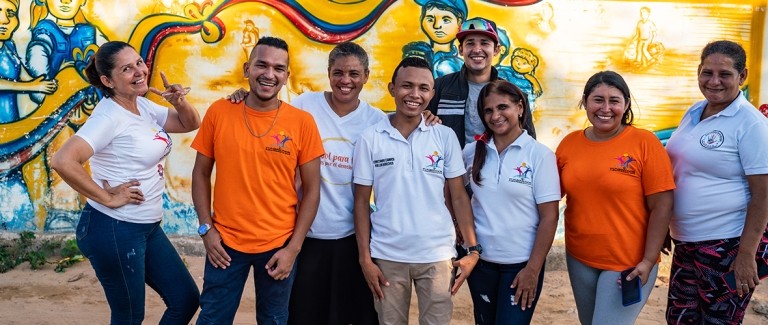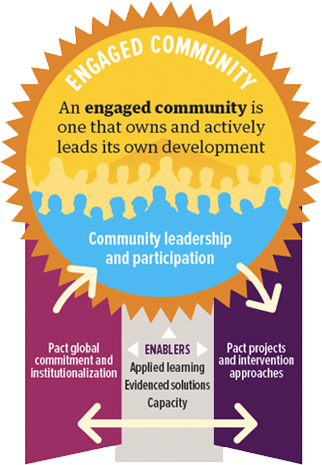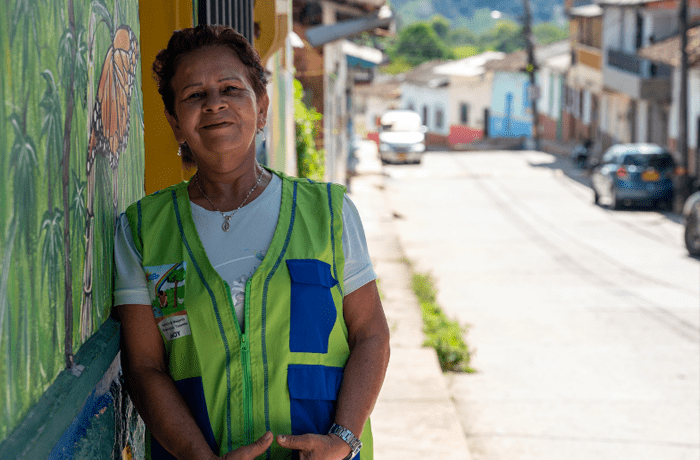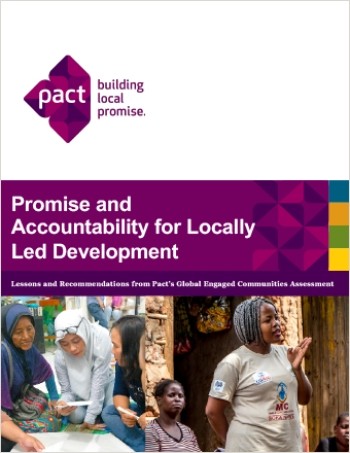
Engaged Communities
For development to be truly sustainable, communities must be at the helm, leading and owning their own development.
For decades, organizations like Pact have been working to tackle big issues in the world—poverty, economic development, peace and security, infectious diseases, climate change and more. Since our founding in 1971, one thing has remained constant at Pact and that is community engagement—building solutions for human development in true partnership with those we serve.
For more than 50 years, our staff, partners and communities around the world have worked in tandem to support strong local organizations, networks and actors so that they can achieve their goals and provide the support and services that their communities need to thrive and be resilient.
We call this engaged communities and it is embedded in everything we do.


An engaged community is one that leads and owns its own development. Communities can be geographic. They can be based on shared characteristics, such as age or gender, or shared interests. They can also be institutional.

If we are committed to sustainable development, then we must also be committed to communities leading their own development. We are dedicated to building on the local promise that already exists in communities around the world so that they can thrive, be resilient and lead their own development.

Pact uses a global assessment tool, our Engaged Communities Accountability Commitment Tool, or ENACT, to hold ourselves accountable in community-led development. This key report shares results, lessons and recommendations we’ve uncovered so far.
Stay Updated. Subscribe Now.
Pact's e-newsletter offers the latest on our efforts around the world to build thriving, resilient and engaged communities that are leading their own development.